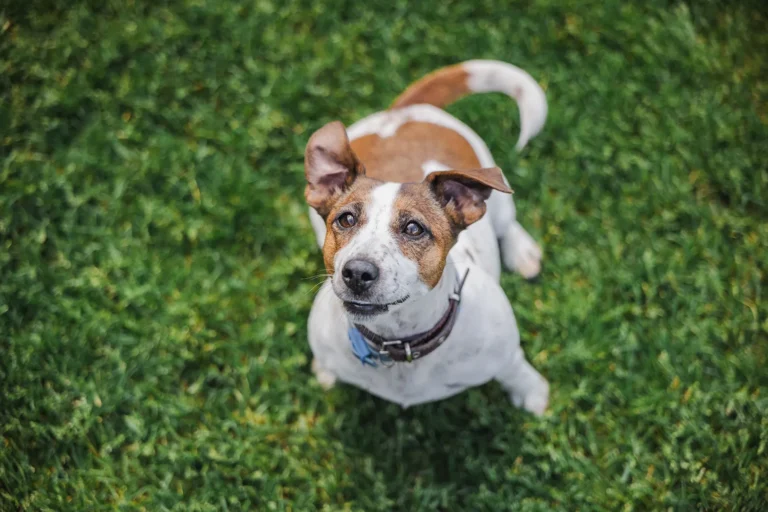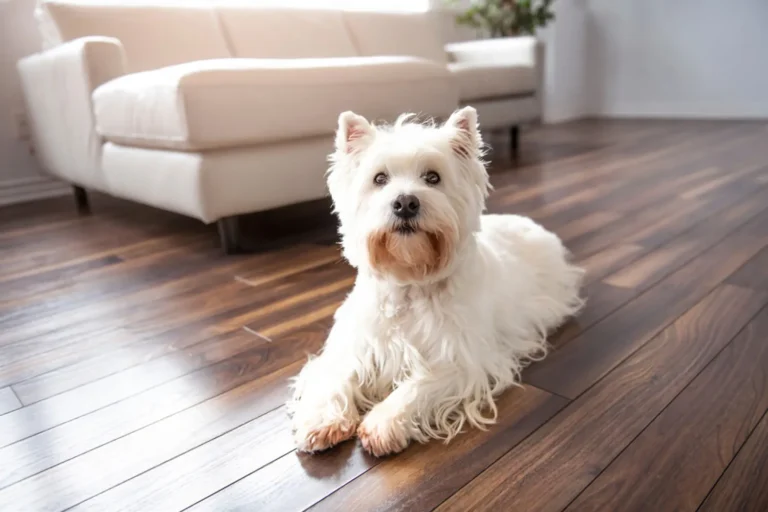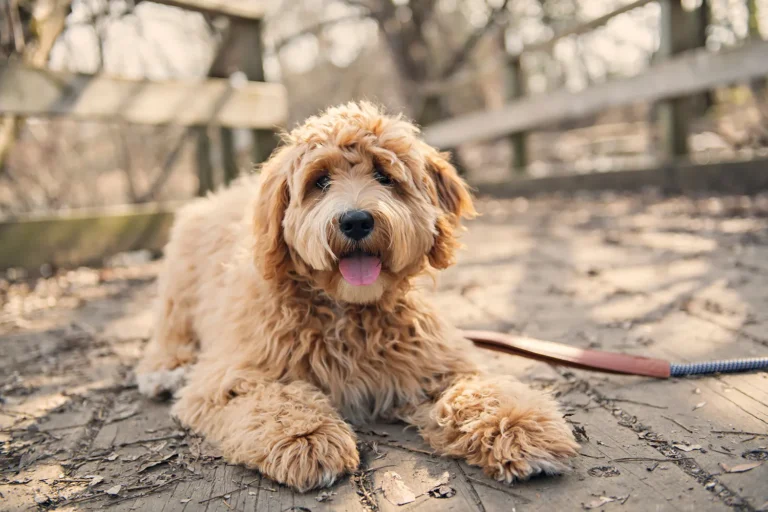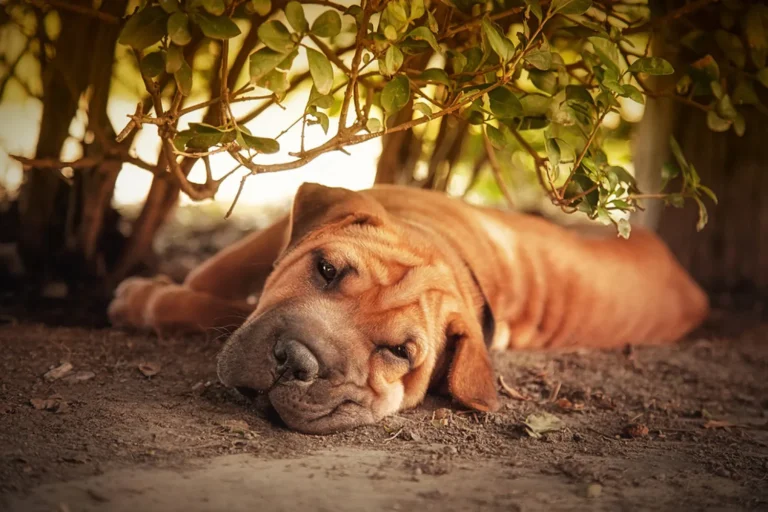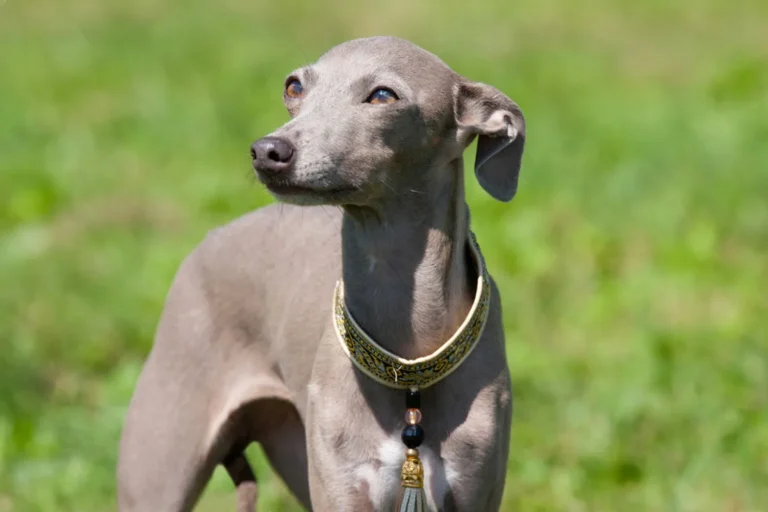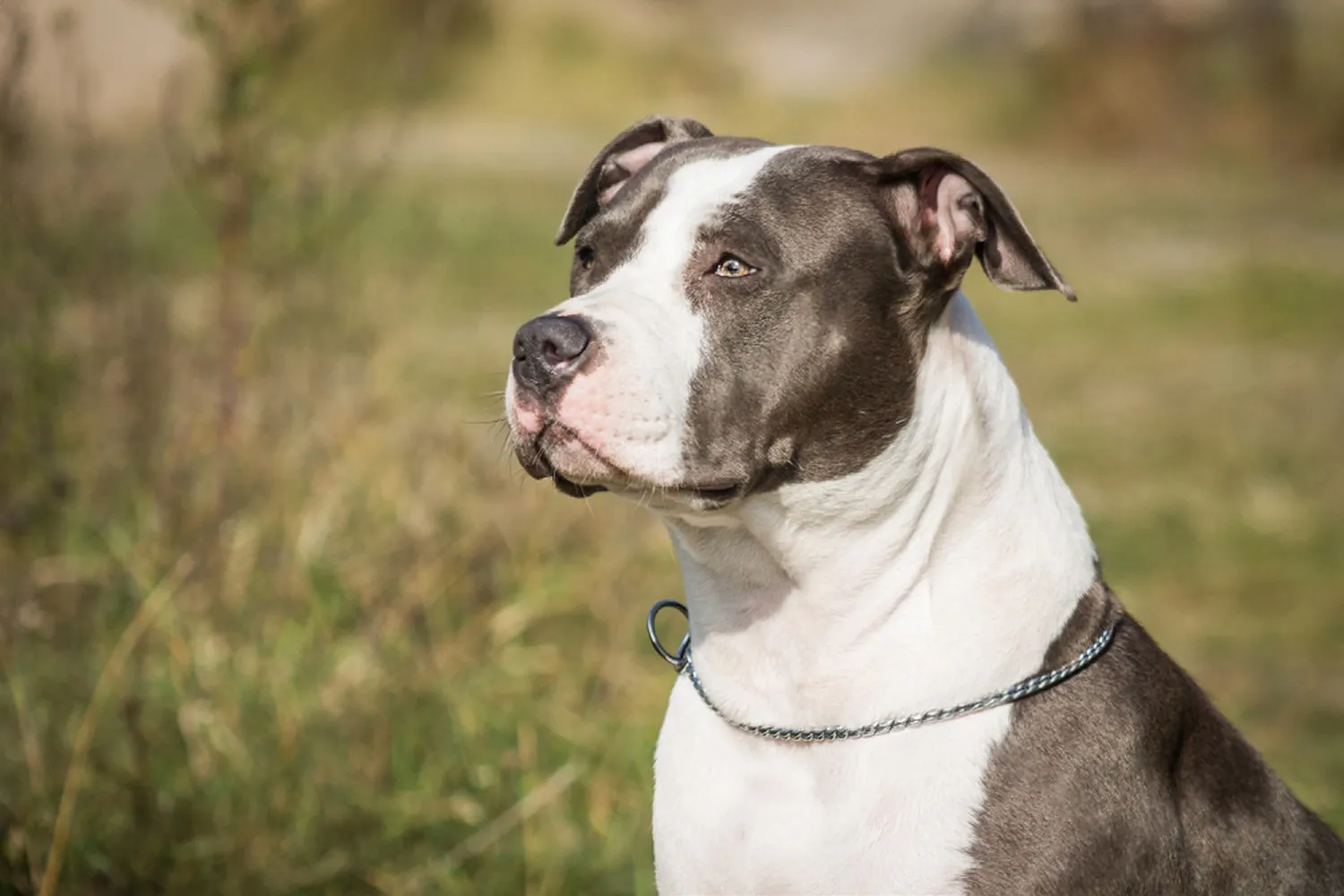
If you’re dreaming of a dog who can keep pace on your morning jogs and then melt into a puddle of snuggles by evening, the American Staffordshire Terrier fits that bill beautifully. I remember taking my friend’s AmStaff out at sunrise she settled into a steady rhythm right beside me, checking in with that big, goofy grin every few blocks. By lunchtime, the same powerhouse was draped across my lap like a living weighted blanket, sighing contentedly as if cuddling were her true calling. They’re the kind of companion that makes a workout feel fun and a quiet night feel even cozier.
Because they’re strong and enthusiastic, a well fitted harness and some basic leash manners go a long way. Keep training sessions upbeat and short; these dogs love to learn, especially when there are treats and praise involved. I like to rotate in puzzle toys on rest days to tire out their brain as much as their muscles, and a weekly routine of jogs, sniffy walks, and couch time keeps everyone happy. Their short coat is easy to maintain just a quick brush and you’re set but don’t skip nail trims; those paws mean business. Most of all, include them in your day. An AmStaff thrives when they’re part of the action, whether that’s a run, a road trip, or just claiming the warm spot next to you on the sofa.
History and Origin of the American Staffordshire Terrier
Born in England, the American Staffordshire Terrier started out as a sturdy farm helper moving livestock along, keeping pests in check, and guarding the property with that steady, watchful presence they’re still known for. When these dogs came to the United States in the early 20th century, they quickly won people over for their versatility and heart. The American Kennel Club eventually recognized them under the name American Staffordshire Terrier AmStaff for short to distinguish them from their closely related English cousins. I always think of that name as a nod to their roots and their new life across the pond.
Of course, their strength and drive have been misused in ugly ways. In the past, some were forced into dog fighting and other blood sports, and that history unfairly smeared the breed as dangerous. It’s heartbreaking, because the AmStaffs I’ve known have been goofy, loving family dogs. I once fostered a broad shouldered boy named Moose who insisted on carrying his own leash to the car tough looking, sure, but he melted any time a kid offered him a treat. With responsible ownership, training, and kindness, their true nature shines through.
Today, AmStaffs are a common sight in dog sports and competitions agility, rally, obedience, even weight pull. I met an AmStaff named Ruby at a local agility trial who powered through the weave poles like a freight train and then curled up in her handler’s lap between runs. They remain among the most popular terriers worldwide and are steadily rebuilding their reputation as loyal, protective, people loving companions. If you’re considering one, my best advice is to give them a job daily training, puzzle toys, long walks and keep socialization positive and consistent. Do that, and you’ll have a devoted partner with a big grin and an even bigger heart.
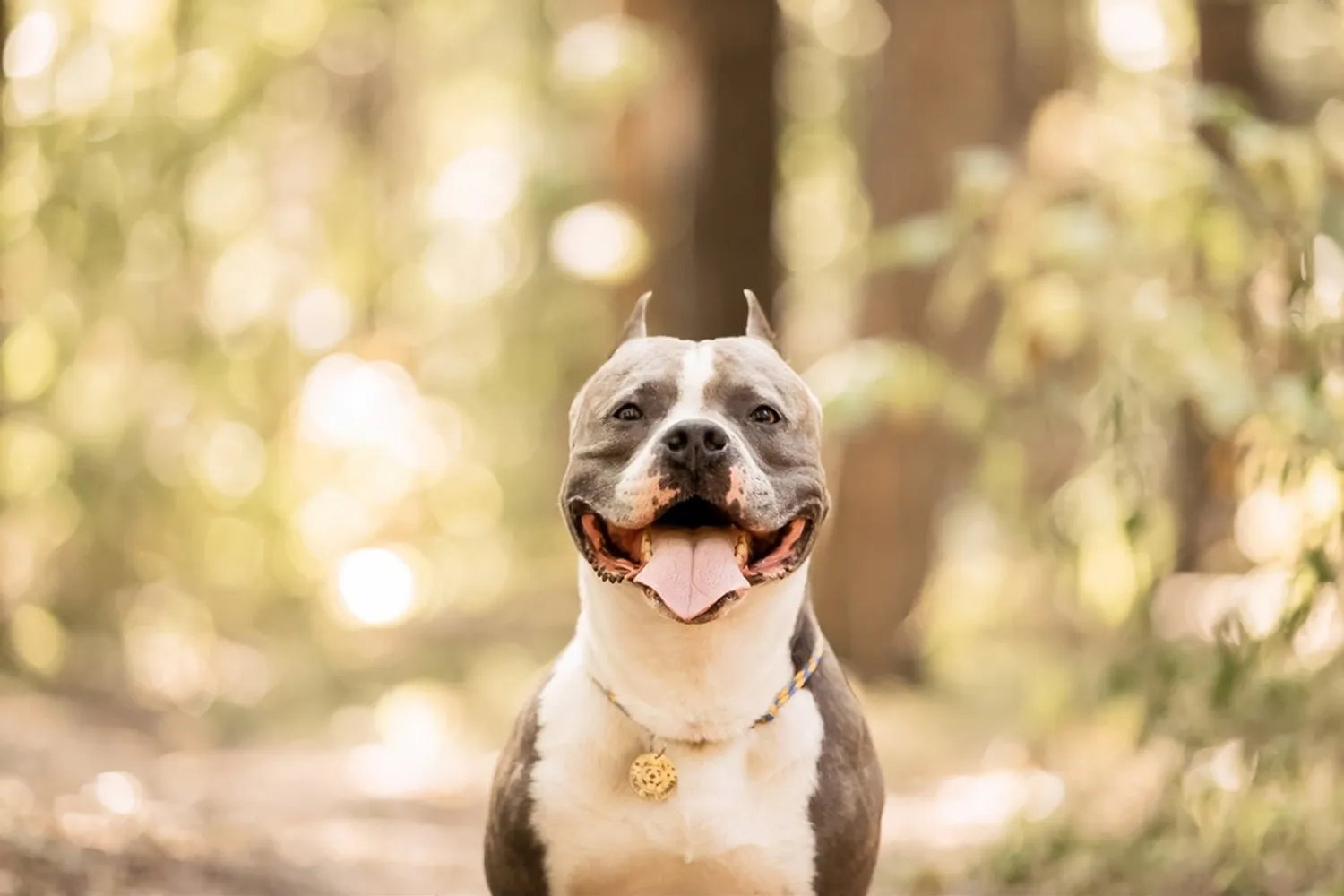
What Is the American Staffordshire Terrier?
Think muscle and might on the outside, big marshmallow on the inside. The American Staffordshire Terrier is a medium sized, short haired powerhouse with energy to spare and a heart that loves hard. They share similarities with the American Pit Bull Terrier and come from a Bulldog and Terrier mix, which gives them that fun blend of courage, drive, and goofy affection. I always joke that they’re like a gym buddy who also insists on being your cuddle buddy.
You’ll notice their look right away: a broad skull with those pronounced, muscular cheeks, and a stocky, athletic frame. They’re larger than the Staffordshire Bull Terrier, but the family resemblance is clear. I remember meeting an AmStaff named Daisy at our local dog park she’d sprint like a bullet, then immediately insist on sitting in my lap as if she weighed ten pounds. Classic AmStaff contradiction.
Living with one means committing to daily exercise and mental games. They thrive with a solid routine: brisk walks, a game of tug or fetch, and puzzle toys to work that clever brain. Positive, consistent training is your best friend; they respond beautifully to praise and treats. Because they’re strong, I like a well fitted harness for walks, and I keep sturdy toys around flimsy ones don’t stand a chance. Grooming is a breeze with their short coat: a quick weekly brush and the occasional bath does it.
And here’s a perk for many owners: unlike American Pit Bull Terriers, American Staffordshire Terriers aren’t illegal in certain countries and don’t require breed specific legislation, which can make travel and housing a bit simpler. In short, if you want an athletic companion who doubles as a snuggle expert, the AmStaff fits the bill.
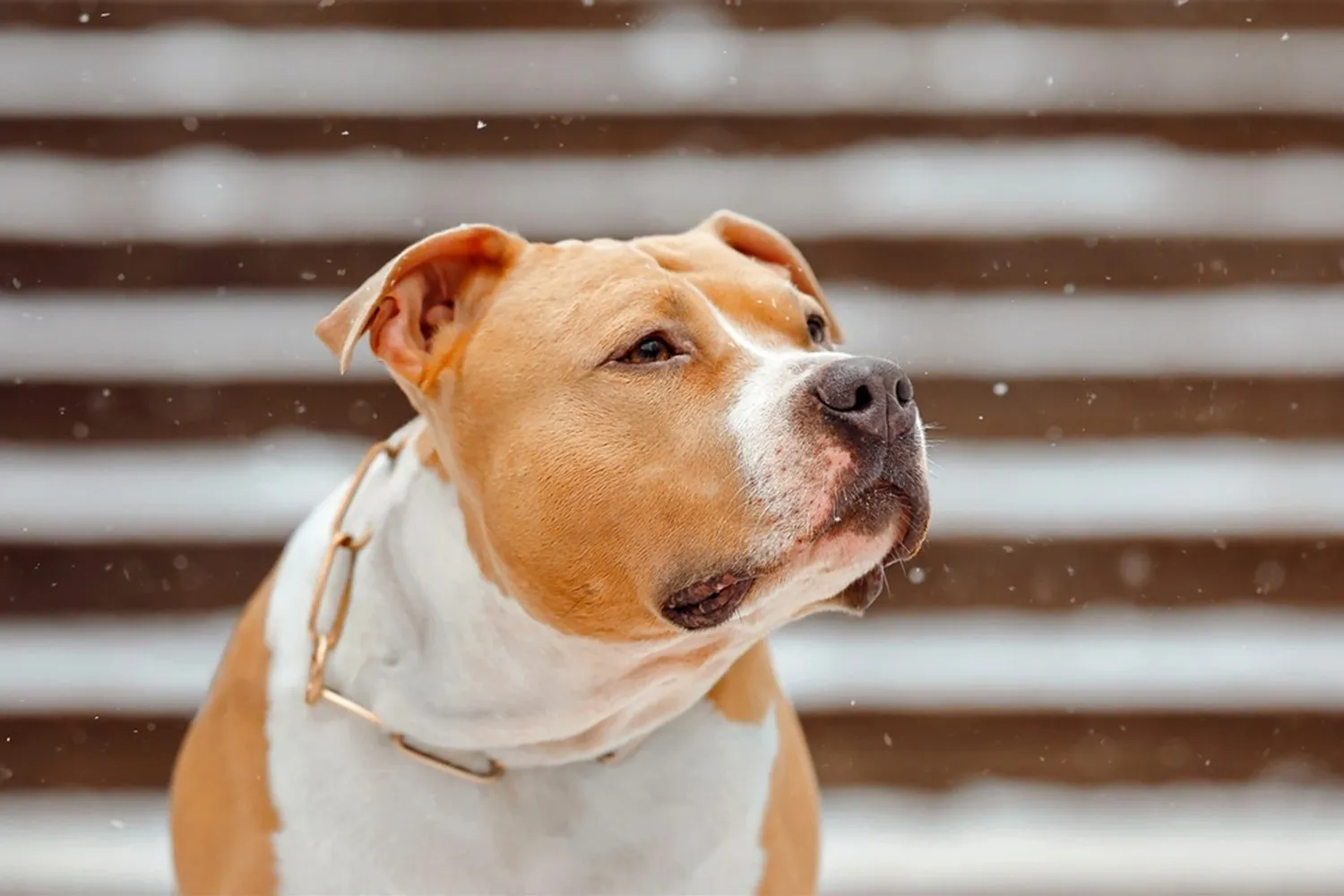
Who Is an American Staffordshire Terrier Best For?
If you want a devoted family companion who doubles as a watchful guardian, the American Staffordshire Terrier fits that bill beautifully. Around the house, they’re affectionate, goofy, and often happiest when they can keep an eye on their people. I’ve had one fall asleep with his head on my foot like it was his job to make sure I didn’t go anywhere without him. They form tight bonds and are generally wonderful with families who include them in daily life.
That said, they shine with owners who are confident and consistent. These dogs are smart, spirited, and sometimes stubborn think “I heard you the first time, but do I have to?” A strong, calm presence and clear boundaries go a long way. If you’re brand-new to dog ownership, a Staffie might be a steep first climb. I’ve seen first time owners succeed, but the ones who did had a great trainer on speed dial, stuck to routines, and practiced training every single day.
Physically, they’re as solid as they look. You need to be able to handle them on leash because, without training, they’ll happily take you for a sled ride. I once met an AmStaff named Bruno who nearly water skied me across a wet field until we switched to a front clip harness and worked on loose leash skills. A few weeks of short, focused sessions stop and go walking, direction changes, and rewarding a slack leash made a world of difference.
Mental stimulation is just as important as physical exercise. These dogs are clever and get bored fast, and boredom plus strong jaws equals creative home renovations you didn’t ask for. I rotate puzzle feeders, frozen stuffed Kongs, and 10-minute training games sit, stay, place, and a little nose work. A flirt pole in the yard is my secret weapon for burning energy quickly, and a solid game of tug (with rules) teaches impulse control. If you can’t set aside daily time for their brains and bodies, this might not be your breed.
They’re an active bunch, ideal for people who love being outdoors. If you’re a walker, hiker, or runner, you’ll have a very happy partner. On busy weekdays, I aim for two brisk walks and one good play or training session; on weekends, a trail hike or a long neighborhood adventure does the trick. They’ll gladly flop into full on cuddle mode after a workout, but don’t let that fool you they’ll be ready to go again by the afternoon.
Families can be a great fit, especially those who enjoy structure. Teach kids how to interact respectfully, supervise play, and give your Staffie a calm spot to retreat to when they need a break. Early socialization meeting friendly people, hearing new sounds, visiting dog friendly stores helps direct their natural protective instincts into polite confidence. A secure yard and sturdy leash are musts; they’re strong and determined when something catches their interest.
In short, an American Staffordshire Terrier is best for someone who’s active, present, and eager to train. If you love a big personality wrapped in a muscular, snuggly package and you’re ready to invest time and consistency you’ll gain a loyal, clownish companion who will proudly claim the best spot on your couch and in your heart.
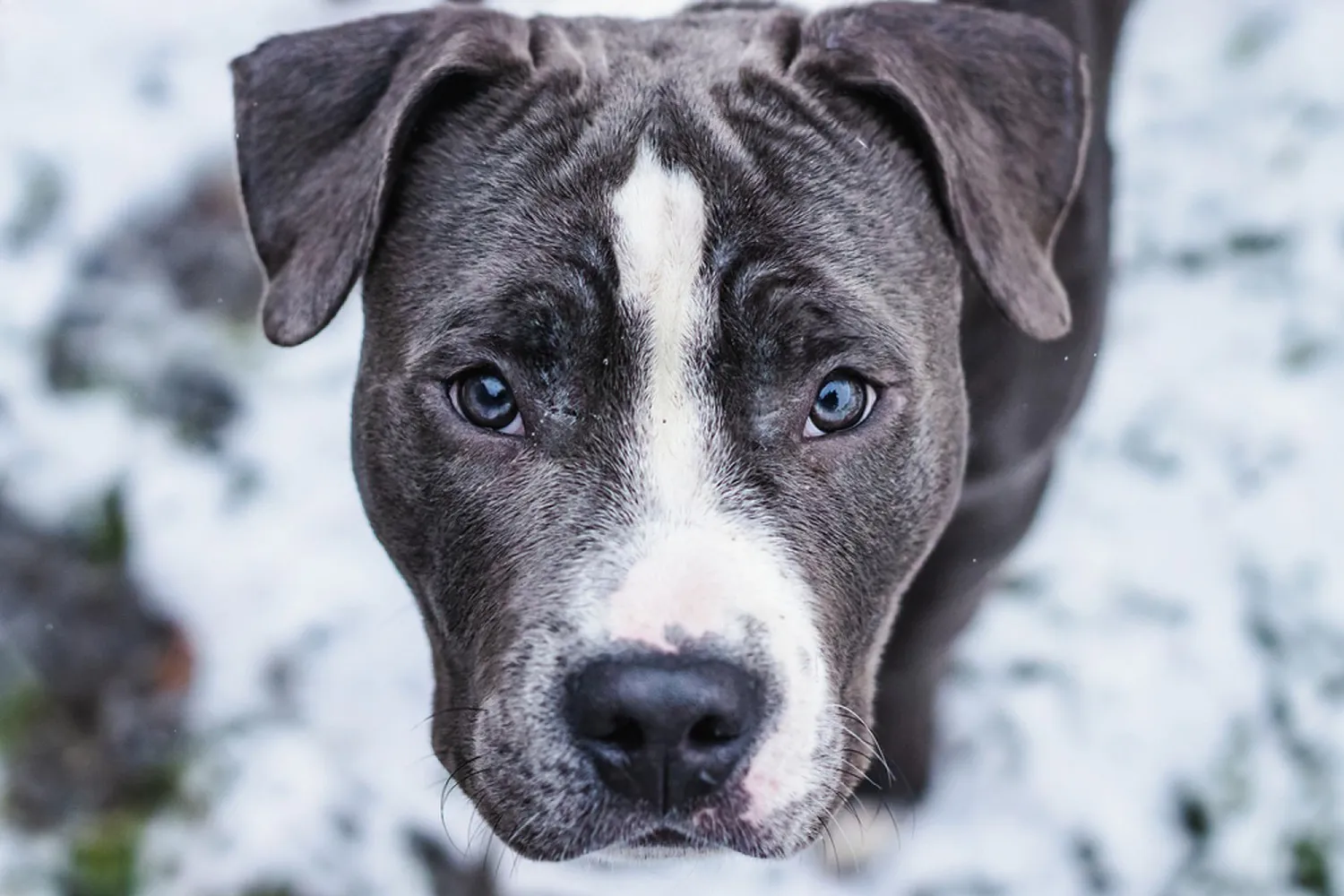
American Staffordshire Terrier Grooming and Shedding
That sleek, glossy coat is one of the easiest parts of living with an AmStaff. A quick weekly brush is usually all it takes to keep them looking sharp. I like a soft bristle brush or a rubber grooming mitt five minutes on the back porch and you’ll pull off whatever dust and loose hair they’ve collected on walks. My friend’s AmStaff, Duke, leans into the mitt like he’s at a spa; it’s more massage than grooming and it keeps his coat shining like polished velvet.
Baths are an as needed situation. If they’ve rolled in something questionable or start to smell doggy, it’s bath time; otherwise, skip it. Over bathing can strip those natural oils that give their coat that mirror like sheen. Use a gentle dog shampoo, rinse well, and towel dry. I keep a microfiber towel by the door after muddy hikes, a quick wipe down saves my rugs and buys me time before a full bath.
As for shedding, they’re light shedders most of the year, with two noticeable seasonal sheds when the weather changes. In spring and fall, I switch to more frequent brushing and sometimes use a grooming glove to catch the extra fluff. A lint roller by the couch doesn’t hurt either. One April, I joked my living room looked like a tiny snow globe after a playful zoomie two extra brushing sessions later, it calmed right down.
Nails are the big must do. Long nails can make walking and running uncomfortable, so plan trims every couple of weeks. If you hear that click click on the floor, it’s time. I prefer a nail grinder for control, keep styptic powder nearby just in case, and smear a lick mat with peanut butter to make it a positive routine. While you’re at it, give their ears a quick check and a gentle wipe, and brush those teeth a few times a week small habits that keep an AmStaff feeling great from nose to tail.
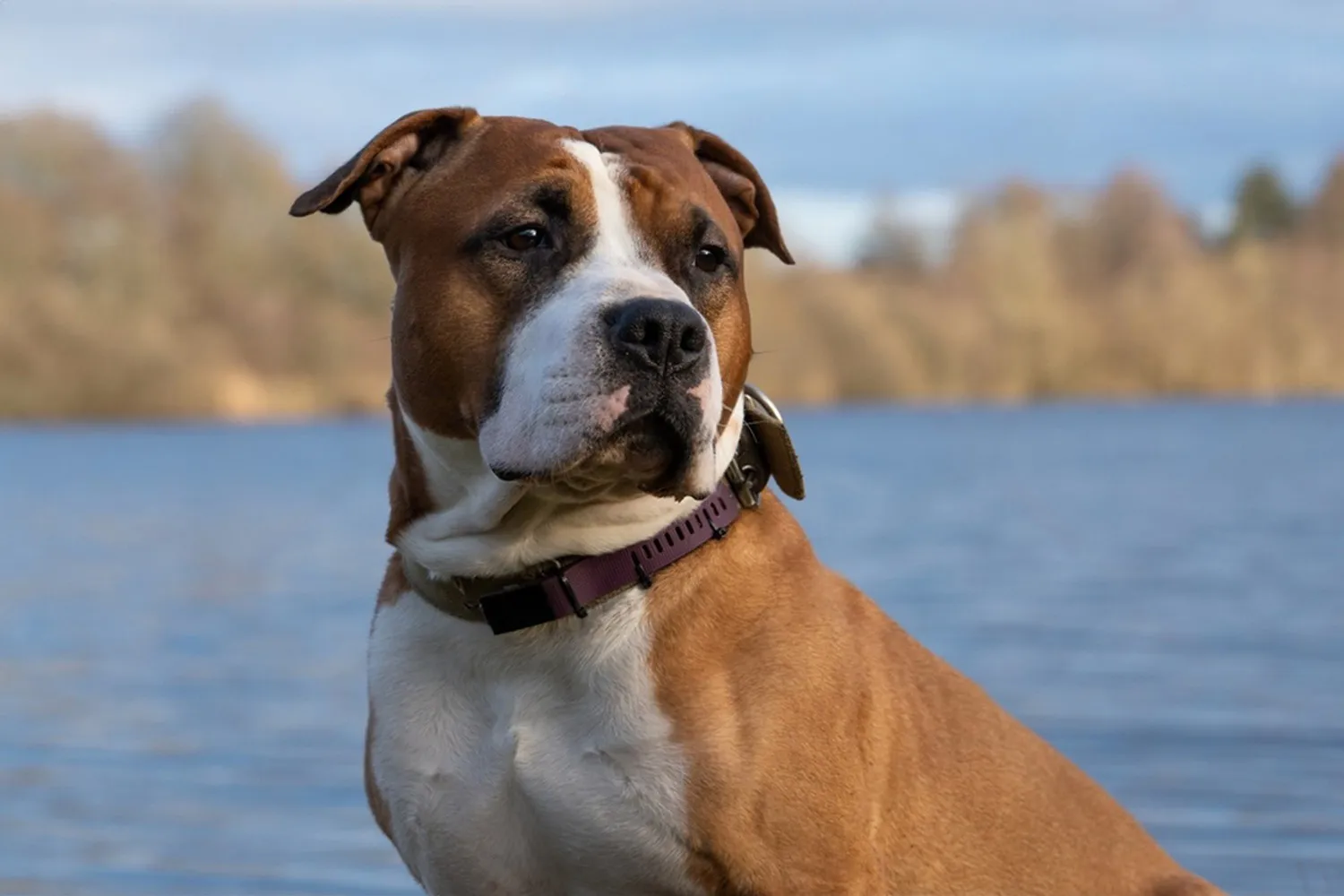
Do American Staffordshire Terriers bark a lot?
In my experience, AmStaffs are not the yappy, nonstop barkers you might be imagining. They tend to use their voice with purpose. Mine would give two solid “who’s there?” woofs when a delivery truck pulled up, then flop back down like nothing happened. They’re excellent at alerting you if someone’s at the door or if something truly seems off, and in a genuinely threatening situation they won’t hesitate to speak up. But compared to some high strung, excitable breeds, they’re generally pretty measured about it.
That said, every dog is an individual, and boredom can turn any quiet dog into a neighborhood commentator. A good dose of daily exercise, a few sniffy walks, and some brain work puzzle feeders, a sturdy chew, or a quick training session go a long way. I taught a calm “place” cue for doorbells, and it was a game changer: we practiced settling on a mat, then rewarded quiet while visitors came in. If your AmStaff gets amped when people pass the window, try frosted film or closing blinds during busy hours.
One tip I swear by is the “look at that” game. When my dog noticed a trigger (like the mail carrier), I’d mark and reward eye contact back to me. Over time, he learned that staying calm pays better than barking. And if barking suddenly ramps up out of character, check for new noises, changes in routine, or even discomfort sometimes they’re just trying to tell us something important.
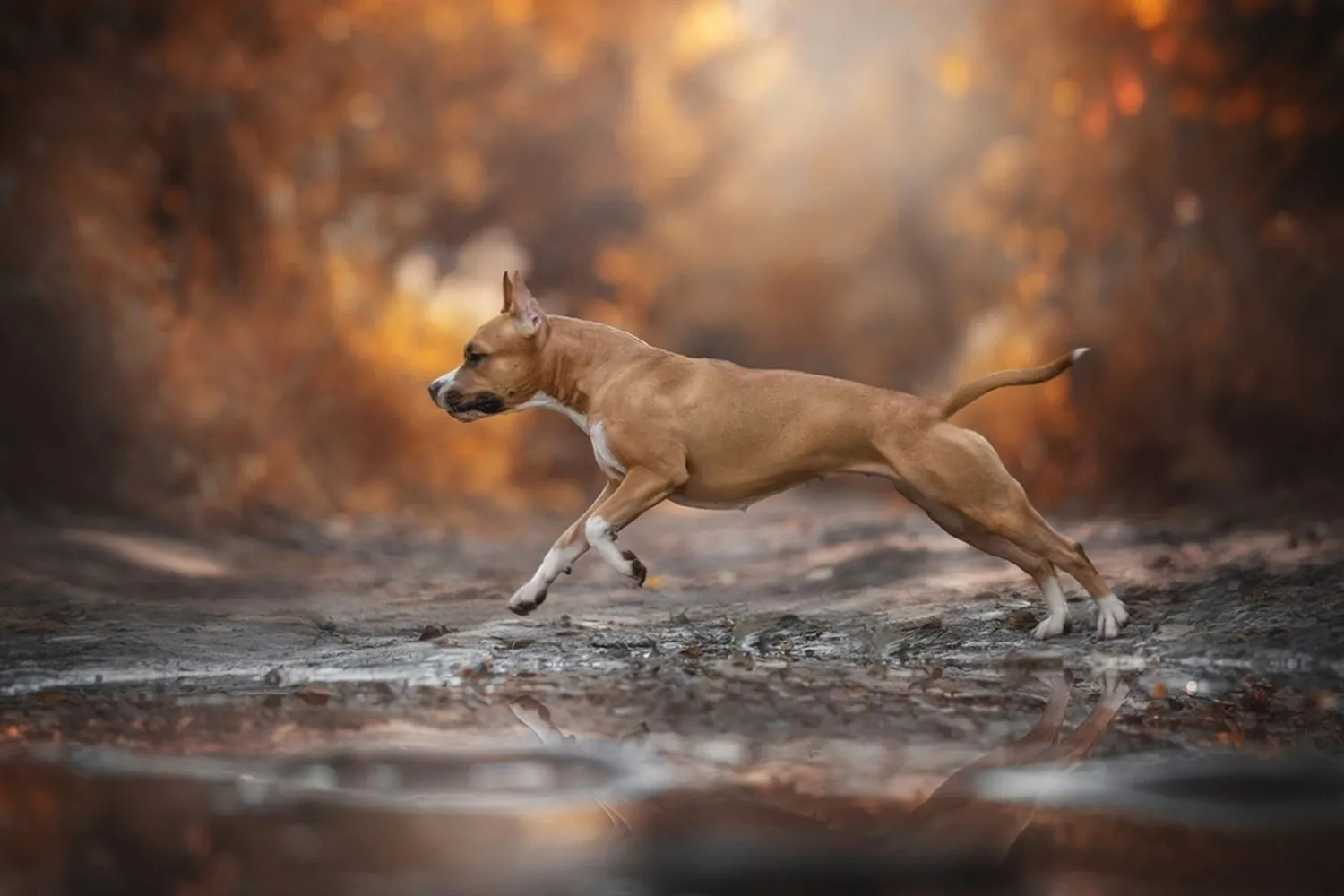
Average Weight and Height of an American Staffordshire Terrier
American Staffordshire Terriers are little powerhouses. Most fall between 18 and 27 kilograms, and they usually stand up to about 48 centimeters at the shoulder, with females tending to be a touch smaller and lighter than males. Don’t be fooled by their compact frames muscle is dense. I remember the first time I picked up my friend’s AmStaff, Luna; she looked medium sized but felt like a kettlebell with paws. Luna is a neat 20 kg and about 45 cm tall, while her brother Bruno fills out closer to 26 kg.
A few tips from living with stocky, athletic dogs: don’t chase a specific number on the scale. Aim for a healthy body condition feel for ribs under a thin layer of muscle, look for a noticeable waist from above, and a slight tuck up from the side. AmStaffs often reach close to their adult height by around a year, then continue to “fill in” with muscle into their second year, so a young dog can look lanky before they bulk up.
If you want to measure at home, measure height at the withers (the top of the shoulder). I use a book laid flat on the shoulder, a wall, and a tape measure simple and pretty accurate. For weight, the bathroom scale trick works: weigh yourself, then weigh yourself holding the dog, and subtract. And because their chests are broad, an adjustable harness is your best friend for a comfy fit as they grow and muscle up.
https://en.wikipedia.org/wiki/American_Staffordshire_Terrier
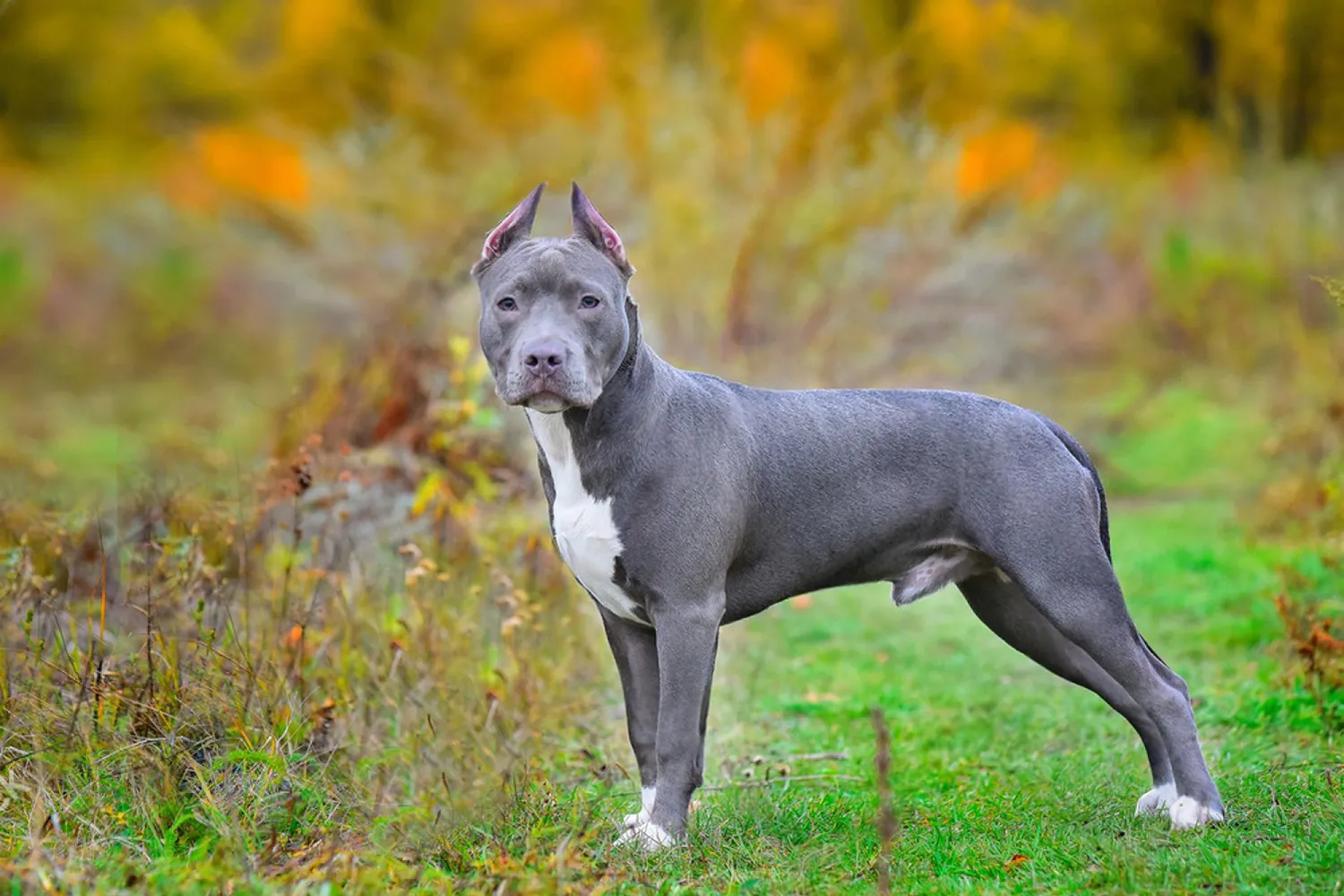
Are American Staffordshire Terriers easy to train?
With the right approach, absolutely. AmStaffs are bright, eager, and love having a job to do. Give them clear guidance and plenty of praise, and they’ll meet you more than halfway. I remember bringing home my first AmStaff and being amazed at how quickly she picked up “sit,” “watch me,” and a cute little bow on cue. The key is starting early and being consistent these dogs are loyal to the core, but they’re also strong and bursting with energy, so structure isn’t optional, it’s essential.
Socialisation is your best friend from day one. Think calm, positive exposure to people of all ages, friendly dogs, and everyday sights and sounds skateboards, umbrellas, delivery vans. Set up controlled meet and greets, do parallel walks instead of head on greetings, and teach a solid “look” or “leave it” to help them make good choices. If you skip this step, that confidence can tilt into pushy behavior toward other animals. A friend of mine learned this the hard way when her youngster decided squirrels were his personal rivals; a month of “look at that” games and rewards for ignoring wildlife made a world of difference.
Leash manners are non negotiable with an energetic, muscular dog. A front clip harness was a shoulder saver for me while we practiced loose leash walking. I’d reward every moment of slack leash and stop like a tree the instant pulling started. Short sessions worked best five minutes here, five minutes there, especially after a little exercise to take the edge off. Add in impulse control games like “wait” at doors and “settle” on a mat, and you’ll feel the difference on your daily strolls.
The fun part? They’re wonderfully trainable and love to learn tricks and tasks. Teach spins, paws, bow, or “bring your leash,” and watch that big grin come out. Many AmStaffs shine in dog sports agility, rally, nose work and some have even served in search and rescue roles. Mine adored agility tunnels so much that she’d zoom through them just for the joy of it. Keep sessions upbeat, use high value treats or a favorite tug toy, and end on a win. With steady training, early socialisation, and outlets for their energy, an American Staffordshire Terrier becomes not just obedient, but an enthusiastic partner who’s in it with you for life.
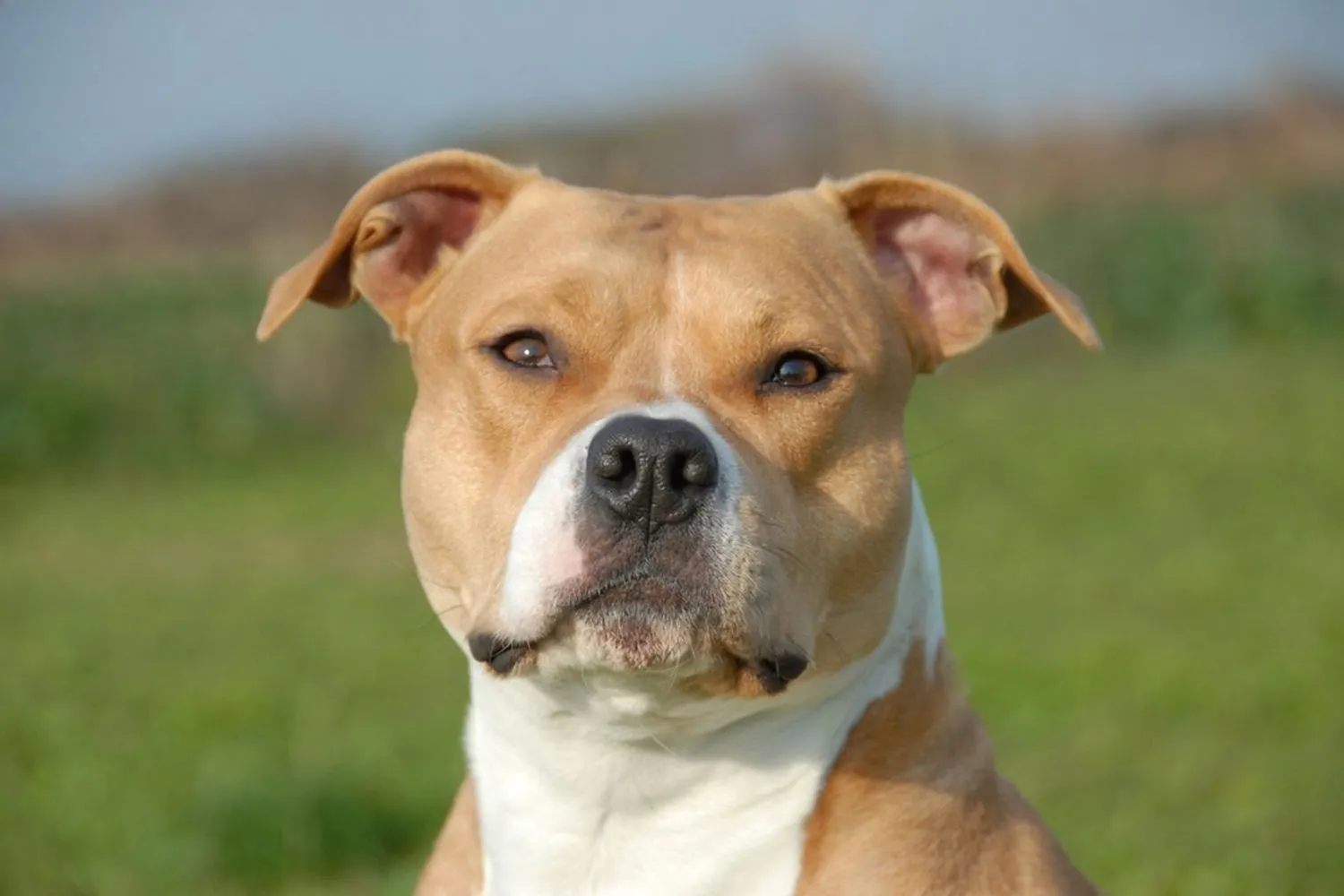
How Do American Staffordshire Terriers Behave? Temperament and Personality
If you’ve ever met an American Staffordshire Terrier, you know they’re big hearted, high energy dogs who bond fast and hard with their people. They’re the kind of dog that leans their whole weight into you for a hug and follows you from room to room like a shadow. I once met an AmStaff named Rosie at a neighborhood adoption event blocky head, wide grin, tail going like a metronome. She made the rounds greeting every stranger as if they were long lost friends. That’s the vibe: loyal to a fault, social, and happiest when they’re right in the middle of family life.
They’ve even earned the old “nanny dog” nickname because of their protective, affectionate nature. While I wouldn’t leave any dog to “babysit” unsupervised (safety first, always), I’ve seen them be incredibly gentle with kids. My niece used to toddle around with a fistful of Cheerios, and our friend’s AmStaff would politely sit, eyes bright, clearly hoping for a snack but never grabbing. They love to cuddle, to be included, and to soak up any affection a family has to give. After a good romp, they’re notorious for turning into 60-pound lap dogs who think the couch and sometimes your chest was made just for them.
Despite their tough, muscular look, the “aggressive” reputation is unfair and mostly rooted in myth. The truth is, behavior comes down to genetics, training, and socialization. Poor breeding, a lack of guidance, or a rough environment can set any dog up for trouble. Choose a responsible breeder or a rescue that evaluates temperament, and start training early with positive reinforcement. Think socialization done right: let them meet people in hats and sunglasses, hear skateboards and doorbells, walk on grass, gravel, and shiny floors. I like to bring tasty treats on these outings so new experiences feel like a party.
AmStaffs are smart, eager, and benefit from having a “job.” They thrive on mental workouts as much as physical ones. A good routine might be a brisk morning walk, a midday sniffari, and an evening play session with a flirt pole or a good game of tug (with a solid “drop it” cue). Puzzle feeders, frozen Kongs, and scent games like “find it” with hidden treats help satisfy their busy brains. I once taught an AmStaff to put toys in a basket; five minutes of practice and he strutted off for a two hour nap like he’d solved world peace.
Training is usually a joy because they want to please. Keep sessions short, upbeat, and clear. Teach impulse control basics sit before the door opens, wait for a release to eat, settle on a mat when asked. If you’re consistent and kind, they’ll meet you more than halfway. A good crate, durable chews, and a regular routine go a long way with this breed.
If your home is full of love and you enjoy an active companion who doubles as a champion snuggler, an American Staffordshire Terrier can be a fantastic fit. Give them structure, exercise, and plenty of time with their favorite humans, and they’ll give you a sweet, steadfast friend who makes every day a little brighter.
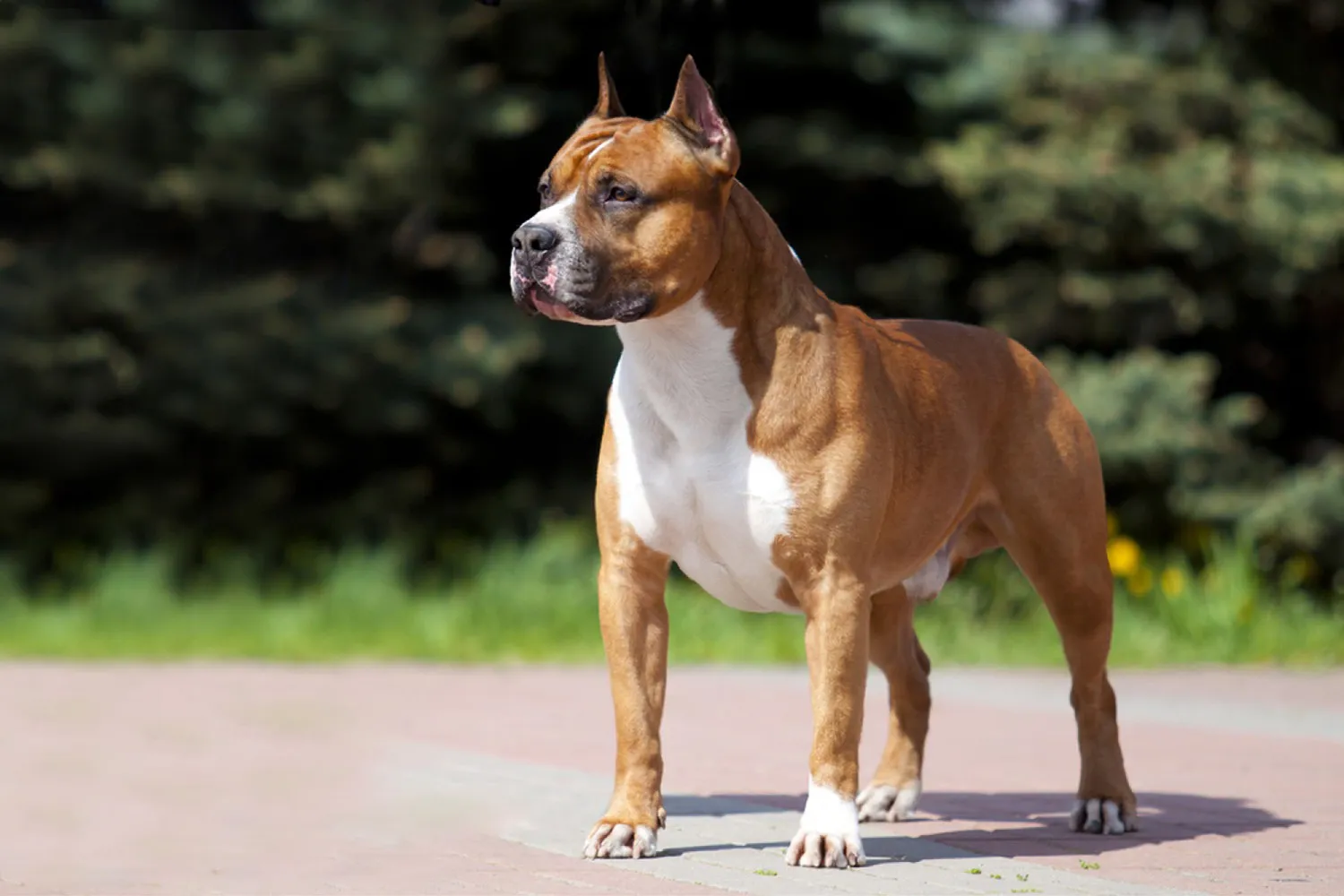
Common Health Issues in American Staffordshire Terriers
American Staffordshire Terriers are generally sturdy, happy go lucky dogs, and most of the ones I’ve known have spent their days zooming around the yard and then snoring on the couch. That said, it’s smart to know what can crop up so you can catch things early and keep them feeling their best.
– Skin irritations and allergies: These pups can be a bit sensitive. Think itchy paws, belly rashes, or head shaking from irritated ears. Grass, fleas, and certain foods can be triggers. I keep a gentle, dog safe shampoo on hand and do quick wipe downs after park days. A good flea prevention plan and chatting with your vet about diet can make a world of difference. My friend’s AmStaff, Roxy, went from nonstop scratching to peaceful naps once we switched her to a simpler, grain free diet and added regular rinses after hikes.
– Hip dysplasia: This is a genetic issue with the hip joint that may lead to stiffness or arthritis as they age. Watch for bunny hopping, stiffness after naps, or reluctance to jump. Keeping them lean is huge here extra weight makes joints work overtime. I use low impact exercise like leash walks and swimming, add runners over slippery floors, and offer a supportive bed. Your vet can guide you on screenings and joint friendly supplements if needed.
– Urinary tract infections: More frequent potty breaks, straining to pee, or licking the area can be red flags. Fresh water and regular chances to go out help. One of my dogs suddenly started asking to go out at 3 a.m. sure enough, it was a UTI, and a quick vet visit cleared it right up.
– Cardiac disease: Some dogs may develop heart conditions as they get older. Regular vet checkups are important so your vet can listen for murmurs and monitor changes over time. If you notice coughing at rest, slowing down on walks, or fainting spells, don’t wait get it checked.
– Autoimmune diseases: These are trickier because signs can vary skin issues that don’t resolve, unexplained fatigue, or odd flare ups. Keeping a little notebook of symptoms and timing can help your vet spot patterns. Routine bloodwork during annual exams is a good habit.
A few general tips that go a long way: keep your AmStaff at a healthy weight, stick to steady exercise, use consistent parasite prevention, and schedule regular wellness visits. If you’re getting a puppy, ask the breeder about health testing for hips and heart. And if you’ve got a senior like my old guy, a comfy bed and some extra rugs can make their golden years a lot more comfortable.
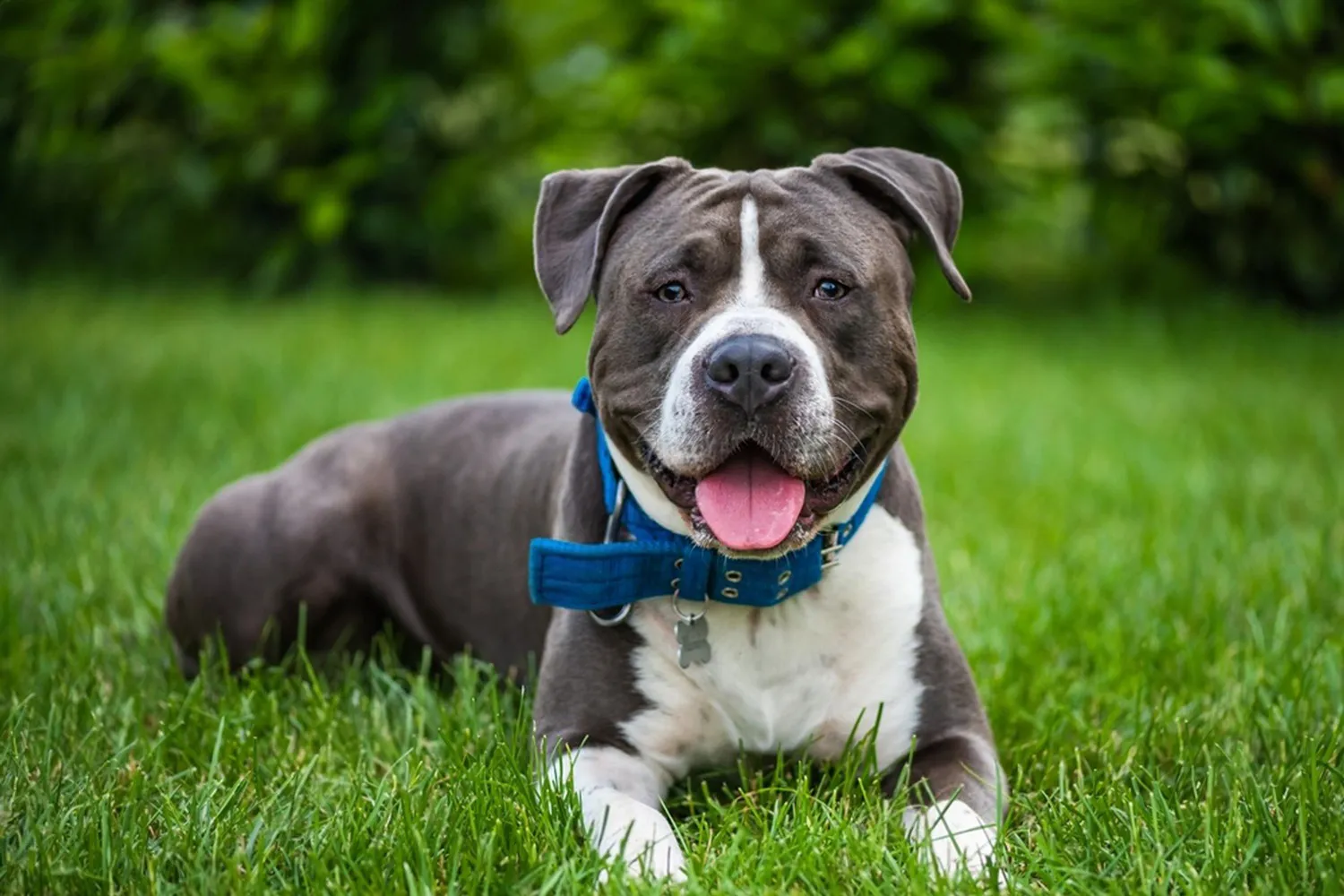
What Is the Lifespan of an American Staffordshire Terrier?
If you bring an American Staffordshire Terrier into your life, get ready for a long, joyful ride together. Thanks to their sturdy build and those cross breed roots people often mention, these pups are known to enjoy relatively long lives for dogs many make it well into their early teens, with some reaching up to about 14 years. My neighbor’s AmStaff, Rocky, celebrated his 13th birthday with a backyard steak party and was still trotting around like he owned the block.
Of course, hitting those golden years takes a little teamwork. Keeping your AmStaff at a healthy weight is huge extra pounds can be tough on joints and the heart. I like to think of exercise as their daily happy pill: brisk walks, tug games, and puzzle toys keep both body and brain in top shape. Mine used to curl up after a sniff heavy walk with that satisfied “job well done” sigh. Regular vet checkups, good quality food, and a solid dental routine also add up. I learned the hard way that ignoring tartar can come back to bite you later (pun intended), so now I brush teeth a few times a week and use dental chews.
As they step into their senior stage, you might notice a slower pace or a few more naps in sunbeams. That’s your cue to switch to shorter, gentler outings, a supportive bed for those powerful shoulders and hips, and maybe joint supplements if your vet approves. Keep their minds busy with easy training refreshers AmStaffs love having a job, even if it’s just “find the treat under the cup.” With consistent care, affection, and a little playful routine, you’ll likely enjoy many years of loyalty, laughs, and that famous Staffy grin.
How Much Should an American Staffordshire Terrier Eat?
Portions depend on age, activity, and the specific food you’re using, so I always start by checking the calories per cup on the bag and then confirming with my vet. As a ballpark for a healthy adult AmStaff (around 50-60 pounds), that often lands near 2 to 3 cups of quality, nutrient dense kibble per day, split into two meals. Puppies need smaller, more frequent meals (three to four a day), while seniors may do best with slightly fewer calories and gentler proteins. I like to use the “rib test” between weigh ins: you should feel ribs under a light layer, not see them sticking out and not have to dig for them.
These dogs usually thrive on high-quality food with solid protein sources. Because AmStaffs can be prone to skin allergies and irritations, many do well on a non allergenic, gluten free, limited ingredient diet. My friend’s AmStaff, Bruno, went from constant paw licking to calm, happy skin after switching to a salmon and sweet potato formula night and day within a few weeks.
A few practical tips I swear by: measure meals (a kitchen scale beats scoops), cap treats at about 10% of daily calories, and consider a slow feeder bowl if your dog inhales dinner. Rotate in vet approved options like fish based or novel proteins if sensitivities pop up, and keep fresh water down at all times. When in doubt, your vet can fine tune portions and ingredients for your dog’s exact needs.
American Staffordshire Terrier FAQs
I get these questions all the time about Staffies, and after living with one and fostering a couple more, I’ve learned a few tricks that make life smoother for everyone.
Can American Staffordshire Terriers be left alone?
Yes, for a reasonable stretch. Most Staffies do fine on their own for a few hours if you set them up for success. Give them a cozy “den” (a crate or a quiet room), a couple of safe chew options, and something to work their brain, like a stuffed, frozen Kong or a puzzle feeder. I like to rotate toys so they feel “new.” A little exercise beforehand goes a long way, too mine settles beautifully after a brisk walk and five minutes of training games. While they don’t typically spiral into severe separation anxiety as quickly as some breeds, boredom is their nemesis. I once came home to what looked like a snow globe of couch fluff because I underestimated my dog’s determination. Lesson learned: secure the trash, remove tempting pillows, and consider a midday dog walker or a quick camera check-in if you’ll be gone longer than usual.
Do American Staffordshire Terriers get along with cats?
They can, with careful introductions and the right temperament. It really depends on your Staffie’s personality, prey drive, and training. Some will see a fast moving cat as a chase toy; others will curl up and share sunbeams. Start slow: swap bedding so they get used to each other’s scent, let them sniff through a baby gate, and do short, calm, on leash meetings with lots of praise for ignoring the cat. Give the cat high perches and safe escape routes. My friend’s Staffie now grooms their senior cat’s ears like it’s a job, but that happened only after weeks of gradual, positive sessions. If your dog fixates or gets amped up, hit pause and work on impulse control cues like “leave it” and “look at me” before trying again. Never force it.
Are American Staffordshire Terriers hypoallergenic dogs?
No. Even though they aren’t heavy shedders, they’re not considered hypoallergenic, and their dander can still trigger allergies. That said, a simple grooming routine helps a lot: a weekly brush with a rubber curry mitt, quick wipe downs with a damp cloth after outdoor play, and regular vacuuming. I keep a lint roller by the door and a HEPA filter running during peak shedding bursts. If allergies are a concern, spend some time around a Staffie before committing your nose will tell you more than any label. And avoid over bathing; gentle, occasional baths keep skin healthy without drying it out.
Is an American Staffordshire Terrier a bully breed?
Yes. Staffies are part of the broader “bully breed” family, descended from Molosser type dogs, which gives them that strong, muscular build they share with Pit Bulls, Bulldogs, and the American Bull Terrier. The term speaks to body type, not temperament. In my experience, a well socialized Staffie is a goofy shadow who just wants to be with their people. Because they’re powerful and enthusiastic, they benefit from clear training, early socialization, and consistent routines. I make a point of regular obedience classes and polite meet and greets so my dog gets to show off his manners. It’s our job to be good ambassadors for a breed that often gets misunderstood.
If you’re considering a Staffie, set them up with structure, exercise, and lots of love. Do that, and you’ll have a loyal, snuggly companion who’ll happily steal your spot on the couch the second you stand up.
Disclaimer:
This article is for informational purposes only and doesn’t replace professional veterinary or training advice. Always consult a certified vet or dog trainer for guidance specific to your pup.
